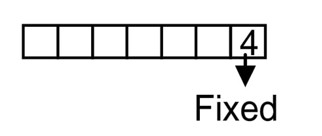38. If E and F are events such that P(E) = , P(F) = and P(E and F) = , find
(i) P(E or F), (ii) P(not E and not F).
38. If E and F are events such that P(E) = , P(F) = and P(E and F) = , find
(i) P(E or F), (ii) P(not E and not F).
-
1 Answer
-
38. Given, P (E) =
P (F) =
P (E and F) = P (E∩F) =
(i) P (E or F) = P (E∪F) = P (E) + P (F) – P (E∩F)
(ii) P (not E and not F) = P (E'∩F') = P (E∪F)' = 1 – P (E∪F)
Similar Questions for you
3, 4, 5, 5
In remaining six places you have to arrange
3, 4, 5,5
So no. of ways
Total no. of seven digits nos. =
Hence Req. prob.

f (x) = x? – 4x + 1 = 0
f' (x) = 4x³ – 4
= 4 (x–1) (x²+1+x)
=> Two solution
Let z be equal to (x + iy)
(x + iy) + (x – iy) = (x + iy)2 (i + 1)
Equating the real & in eg part.
(i) & (ii)
4xy = -2x Þ x = 0 or y =
(for x = 0, y = 0)
For y =
x2
x =
=
of
=
When
gives c = 1
So
sum of all solutions =
Hence k = 42
Each element of ordered pair (i, j) is either present in A or in B.
So, A + B = Sum of all elements of all ordered pairs {i, j} for and
= 20 (1 + 2 + 3 + … + 10) = 1100
Taking an Exam? Selecting a College?
Get authentic answers from experts, students and alumni that you won't find anywhere else
Sign Up on ShikshaOn Shiksha, get access to
- 65k Colleges
- 1.2k Exams
- 679k Reviews
- 1800k Answers
